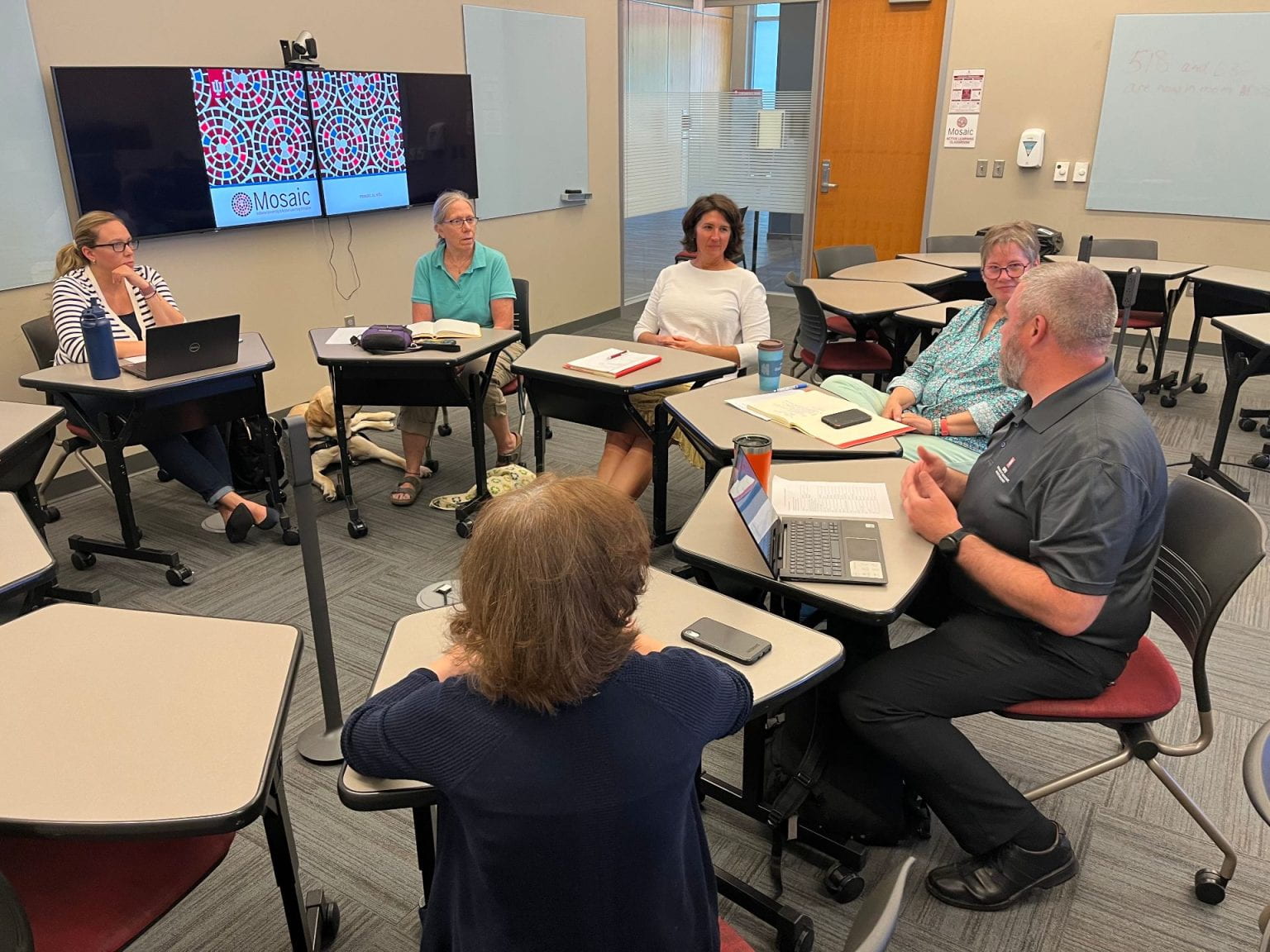From the Mosaic blog
Originally posted by Samuel Evola, Mosaic Research Assistant/Intern, on October 23, 2023
Eight years ago, Indiana University launched the Mosaic Initiative to support innovative classroom design, research, and active learning in all Indiana University classrooms. As we began to transform classrooms and teaching practices, we began to also explore systems associated with teaching and classrooms, such as scheduling classrooms, that were often just as impactful to student learning experiences as the instructional choices that their faculty were making.
The Challenge
It has proven a challenge for most universities to schedule faculty consistently in classrooms that support their active-learning approaches. For example, if an instructor wanted to use collaborative learning, they would be frustrated to be scheduled in a lecture hall—a space where it might be difficult to gather students for group work. Was there a way, we frequently asked, to schedule faculty in the classrooms they wanted to teach in? Could we design a system to do so consistently? Was it possible consider teaching approaches over proximity or precedence in matching instructor to classroom? We explored this idea recently with the Registrar and a group of Mosaic Faculty Fellows on the IUPUI campus and, out of that session, came up with a plan for a pilot to explore this very idea. The initial phases of the pilot study have been completed, and we're excited to report our preliminary findings!
Promising Results
We designed and distributed a survey in summer 2023 asking 32 Senior Mosaic Fellows to request classrooms for spring 2024 on the basis of the teaching styles they adopt. The survey asked faculty for the details of the classes they would teach (size, time, etc.), and asked them to use IU's classroom database to identify a room they would like to teach in for the upcoming term. Of the faculty who were invited to participate, more than half of them responded. There were concrete, usable room requests in each instructor's submission and no conflicts between instructors' requested times and days. Besides these results, two notable features emerged out of the faculty responses.
- Every submission mentioned furniture and space, frequently with reference to student groupings. Participants specifically mentioned things like "movable desks," "tables grouped in 4s," and "the ability to reconfigure the seating."
- Instructors overwhelmingly requested ways to share and display student work. Respondents pointed to "multiple dry erase boards," the ability for students to share their computer screens, and other technologies like "flip charts."
Fuller answers are available in Appendix 2 of the linked evaluation, compiled after the pilot was completed. But other than sheer participation, no other patterns seemed as marked as these two, which emerged overwhelmingly from instructors' answers.
Conclusions & Next Steps
We were excited to have such robust data, for two reasons. First, it demonstrates that it is, in fact, possible to align teaching approaches and room assignments. Faculty were enthusiastic about the chance to participate, and the Registrar has reported that the process may have actually saved time in the room-assignment workflow. Second, it pointed to and made explicit patterns we have observed over the last eight years. Furniture and displays may seem like rudimentary technology, but they are frequently tools that instructors point to as they think about remaking their teaching.
Perhaps most exciting is that the success of this initial run has prompted us to continue the pilot into the upcoming two semesters. We'll extend the same room-selection invitation for the spring 2024 and summer 2024 sessions, providing the opportunity to receive more feedback from instructors and staff members as to how such a procedure affects their workflow. Faced with the consistent wondering of whether we can get teachers into classrooms more suited to their approaches, we've discovered that, at least on a small scale, we can arrange things so as to do just that. We're excited at this prospect. Take a look at the fuller evaluation of our procedure, and stay tuned for what the next two semesters' worth of trial bring!
Access the full findings of our survey here.
Visit the Mosaic Blog here.


